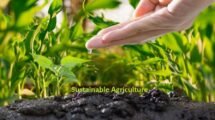Ali Mohamed Reshi, 60, gazes over his saffron farm in Pulwama’s Lethpora area, about 22 kilometers south of Srinagar. Climate change and a prolonged dry spell threaten the crop of saffron, a highly valued spice in the world.
Since the beginning of June, the Valley has been experiencing a scorching heatwave, with temperatures reaching 34 degrees Celsius. On July 3, Kashmir’s temperature reached 35.6 degrees Celsius, the highest in the last 25 years.
Climate change has had a negative impact on the Kashmiri saffron fields, which cover thousands of hectares in Pulwama and Budgam districts. The erratic weather patterns have also caused many farmers to convert their saffron fields into apple orchards and other crops that they believe are better suited to a changing climate.
Also Read | Jammu & Kashmir inked contract with New Zealand to improve sheep farming
Declining production
According to Reshi, his seven-kanal farm used to produce between 1,100 and 1,200 grams of saffron, but in recent years it has dropped to a few hundred grams.
“In 2022, the production dropped to 100 to 150 grams only” , according to him. According to official data, saffron production has decreased by 65% in the last two decades. Annual production in 1990 was 15.95 tonnes, compared to 2.6 tonnes in 2023-24. Similarly, the area used for spice cultivation decreased from 5,707 hectares in 1996-97 to 2,387.71 hectares in 2019-20.
Mohammad Ashraf, another saffron farmer from Pampore, stated that he had switched to mustard cultivation. “The low snowfall and rain deficit have impacted production over the last many years,” stated an agriculture scientist.
“Kashmir experienced more or less a snowless winter in 2024 and this change is bound to impact the crops” , he commented. Also Read | Flipkart & Spices Board join to provide market access to spices sector across country
According to Chief Agriculture Officer Pulwama Mohammad Iqbal Khan, if the current dry spell lasts until August, it will have a negative impact on the crop. He stated that the soil required moisture in August because farmers grubbed their fields at that time.
A failed dripping system
In 2010, the government implemented a drip irrigation system as part of the ₹412-crore National Saffron Mission to address prolonged dry spells. However, farmers report that, while a pipe network was installed on their farms, it was never fully operational. Farmers are losing spice from their crops.


















Add Comment